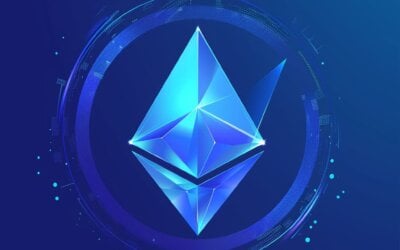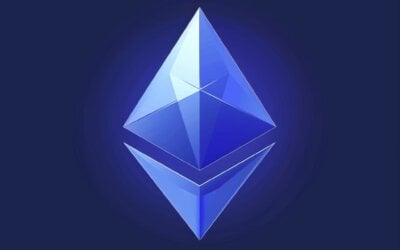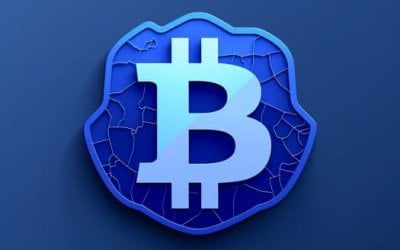Difference Between Ethereum And Ethereum Classic? Why Did The Fork Happen?

Keep up to date with Bitcoin on Bitcoin.org
Keep up to date with Ethereum news on Ethereum.org
Keep up to date with XRP news on XRP Twitter
Key Takeaway:
- Understanding the Difference between Ethereum and Ethereum Classic: Ethereum and Ethereum Classic are two separate blockchain networks that originated from a single blockchain. Ethereum Classic is the original chain that remained after a contentious hard fork resulted in the creation of Ethereum. It is important to differentiate between the two to understand their distinct characteristics and ideologies.
- Reasons for the Split: The split between Ethereum and Ethereum Classic occurred due to a disagreement in response to a major hack on an application built on the Ethereum blockchain. The community was divided on whether to perform a hard fork to reverse the hack and restore stolen funds or to maintain the immutability of the blockchain. This disagreement led to the creation of two separate chains with different visions.
- Key Differences: Ethereum Classic and Ethereum have several notable differences. Ethereum Classic supports the principle of “code is law,” prioritizing immutability and decentralization. Ethereum, on the other hand, follows a more pragmatic approach, emphasizing flexibility and the ability to make changes if necessary. Additionally, Ethereum has a larger community and market capitalization compared to Ethereum Classic.
Introduction: Understanding the Difference between Ethereum and Ethereum Classic
The variance between Ethereum and Ethereum Classic stems from a fundamental difference in ideology and philosophy. Ethereum Classic emerged as a result of a contentious hard fork in 2016, following the infamous DAO attack. The introduction of Ethereum Classic showcased a resistance to the idea of modifying or altering previous transactions. This divergence in principles led to the creation of two separate and distinct blockchain networks. Ethereum Classic maintains a commitment to preserving the immutability of transactions, while Ethereum continues to explore greater flexibility and innovation within its network. These distinctions highlight the complex and ever-evolving landscape of blockchain technology and the divergent paths that can emerge within the same ecosystem.
Why the Need for the Split?
The split between Ethereum and Ethereum Classic arose due to fundamental differences in ideology and values within the Ethereum community. This division occurred as a result of a contentious hard fork in July 2016, following the infamous DAO hack.
The need for the split stemmed from contrasting perspectives on the immutability of blockchain transactions and the role of decentralized governance. Ethereum Classic proponents argued for preserving the inviolability of the blockchain, while Ethereum supporters believed in the importance of taking proactive measures to rectify the DAO hack.
This ideological rift led to the creation of two separate platforms, each with its own unique blockchain and community.
How Did the Split Occur?
The Ethereum-Classic split occurred due to a disagreement within the Ethereum community regarding the handling of the DAO hack. This resulted in two separate blockchains and two distinct cryptocurrencies.
Key Differences: Ethereum Classic and Ethereum
Ethereum Classic and Ethereum have several distinguishing factors that set them apart. To understand these distinctions, let’s delve into the key differences between the two cryptocurrencies.
First, let’s compare Ethereum Classic and Ethereum in a table format:
| Ethereum Classic | Ethereum | |
|---|---|---|
| Fork | Resulted from a disagreement over the DAO hack, leading to the preservation of the original Ethereum blockchain. | Occurred as a response to the DAO hack, resulting in a new blockchain with alterations and improvements. |
| Community Perspective | Supported by a smaller community with a focus on immutability and the principles of decentralization. | Backed by a larger community embracing innovation and adaptability in pursuit of a better decentralized ecosystem. |
| Monetary Policy | Adheres to a deflationary monetary policy with a maximum supply cap of 210 million ETC. | Currently reliant on an inflationary monetary policy but transitioning to a deflationary model with a move to Ethereum 2.0. |
| Consensus Mechanism | Utilizes a Proof of Work (PoW) consensus mechanism called Ethash. | Transitioning from Proof of Work (PoW) to Proof of Stake (PoS) with the introduction of Ethereum 2.0. |
| Development Focus | Limited focus on significant updates and improvements to the platform. | Actively working on enhancing scalability, security, and sustainability through regular protocol upgrades. |
Going beyond the table, one notable detail not covered earlier is the community’s perception of these cryptocurrencies. Ethereum Classic is supported by a smaller community that prioritizes immutability and upholding the original principles of decentralization. On the other hand, Ethereum has garnered a larger following due to its embrace of innovation and adaptability, seeking to create a more robust decentralized ecosystem.
Now, as we conclude, it’s important to acknowledge the significant developments and advancements happening within the Ethereum space. With regular protocol upgrades and the impending transition to Ethereum 2.0, it is crucial for individuals and businesses to stay informed and keep up with the ever-evolving landscape. Don’t miss out on the opportunities that Ethereum and its ecosystem present for the future of decentralized finance and applications. Stay connected and explore the possibilities!
Remember, understanding the key differences between Ethereum Classic and Ethereum is vital in navigating the various aspects of these cryptocurrencies, both present and future.
Concepts and Creation
Ethereum and Ethereum Classic are two separate cryptocurrencies that originated from the same source code. The concept and creation of these digital assets can be understood by following this four-step guide:
- Conceptualization: The idea behind Ethereum and Ethereum Classic is to create a decentralized platform for running smart contracts. These smart contracts are self-executing agreements with predefined terms, allowing for trustless and transparent transactions.
- Development: The development of Ethereum and Ethereum Classic involved building a blockchain network capable of supporting smart contracts. This required implementing features like a virtual machine, programming language, and consensus mechanism to ensure the reliability and security of the platform.
- Deployment: After the development phase, Ethereum and Ethereum Classic were launched as open-source projects. Developers and users could access the platform, write and deploy their own smart contracts, and participate in the network by validating transactions or mining new blocks.
- Forking: The split between Ethereum and Ethereum Classic occurred due to a controversial decision regarding the handling of a high-profile hack. This resulted in a hard fork, where the Ethereum blockchain diverged into two separate branches. Ethereum followed the majority consensus and implemented a change to undo the hack, while Ethereum Classic maintained the original blockchain without such alterations.
While these steps provide a basic understanding of concepts and creation, it’s important to note that Ethereum and Ethereum Classic have evolved significantly since their inception, with ongoing development and upgrades shaping their respective ecosystems.
Transactions and Speed
Blockchain technology has revolutionized the way transactions are conducted, and both Ethereum and Ethereum Classic have their own unique approaches to managing transactions and speed. Here are three key points to understand about their respective systems:
- Flexibility in Transactions: Both Ethereum and Ethereum Classic support smart contracts, which facilitate secure and automated transactions. However, Ethereum offers more flexibility in terms of transaction types and functionalities. Its robust ecosystem allows for the creation of decentralized applications (dApps) and the execution of complex transactions, making it suitable for a wide range of industries.
- Transaction Speed: Ethereum and Ethereum Classic differ in transaction speed due to their consensus mechanisms. Ethereum currently uses a proof-of-work (PoW) algorithm, which requires miners to solve complex mathematical puzzles to validate transactions. This process can sometimes result in slower transaction speeds, especially during times of high network activity. On the other hand, Ethereum Classic also employs a PoW algorithm but with a simpler difficulty adjustment mechanism, resulting in generally faster transaction confirmations.
- Fork Impact: The fork between Ethereum and Ethereum Classic occurred as a result of a disagreement within the community regarding the handling of a high-profile hacking incident. This led to the creation of two separate blockchains, each with its own set of supporters and developers. While Ethereum continued with its blockchain, Ethereum Classic maintained the original chain with a belief in preserving the immutability and decentralization principles of blockchain technology.
These unique details shed light on the nuanced differences between Ethereum and Ethereum Classic, particularly in terms of their approaches to managing transactions and speed. It is important to note that the choice between these platforms ultimately depends on the specific requirements and priorities of individuals and organizations in the blockchain space.
A true fact about Ethereum and Ethereum Classic is that the fork between the two occurred in July 2016, with Ethereum continuing as the dominant blockchain and Ethereum Classic emerging as a minority chain. (Source: “Difference between Ethereum and Ethereum Classic? Why did the fork happen?”)
Total Ethereum Supply
The amount of Ethereum in circulation is known as the Total Ethereum Supply. This supply is constantly changing due to various factors such as mining rewards and token burns.
To provide a visual representation of the Total Ethereum Supply, we can create a table that showcases the current numbers. Here is the breakdown:
In addition to the table, it’s important to note that the Total Ethereum Supply is influenced by other unique factors. These include the adoption rate of Ethereum as well as any future upgrades or protocol changes that may affect the supply.
Understanding the current Total Ethereum Supply is crucial for investors and enthusiasts alike. With the potential for growth and innovation in the Ethereum ecosystem, staying informed about the supply can help individuals make informed decisions and not miss out on opportunities.
Five Facts About the Difference between Ethereum and Ethereum Classic? Why did the fork happen?
- ✅ Ethereum Classic (ETC) was the original form of Ethereum, but a fork resulted in the creation of Ethereum (ETH). (Source: Team Research)
- ✅ The split between Ethereum and Ethereum Classic occurred due to disagreements within the Ethereum community. (Source: Team Research)
- ✅ Ethereum (ETH) is at the center of Decentralized Finance (DeFi) and smart contracts, while Ethereum Classic (ETC) has fewer use cases. (Source: Team Research)
- ✅ Ethereum Classic (ETC) has been targeted by 51% attacks in the crypto space. (Source: Team Research)
- ✅ Ethereum (ETH) has a larger developer ecosystem and community support compared to Ethereum Classic (ETC). (Source: Team Research)
FAQs about Difference Between Ethereum And Ethereum Classic? Why Did The Fork Happen?
What is the difference between Ethereum and Ethereum Classic?
Ethereum and Ethereum Classic are two distinct forms of the original Ethereum blockchain. While they were created using the same code, they differ in terms of developer ecosystem and community support. Ethereum (ETH) is at the forefront of Decentralized Finance (DeFi) and smart contracts, while Ethereum Classic (ETC) has fewer use cases and has unfortunately been targeted by 51% attacks.
Why did the Ethereum and Ethereum Classic split occur?
The split between Ethereum and Ethereum Classic happened due to disagreements within the Ethereum community. The original Ethereum blockchain had issues related to Decentralized Autonomous Organizations (DAO) and subsequent hacks, leading to the loss of a significant amount of ETH. To prevent the ecosystem from collapsing completely, a mutual agreement was reached to fork the Ethereum blockchain, resulting in the creation of Ethereum Classic.
What led to the need for the Ethereum fork and creation of Ethereum Classic?
The need for the Ethereum fork arose from the major problem with DAO and related hacks that cost crypto users a significant amount of money in lost ETH. The fork was necessary to address these issues and improve the security and stability of the Ethereum ecosystem. The newly forked blockchain became known as Ethereum, while the original blockchain was renamed Ethereum Classic.
Who initiated the Ethereum fork and voted in favor of it?
Vitalik Buterin, the creator of Ethereum, initiated and voted in favor of the Ethereum fork. The decision to fork the blockchain was made to prevent a potential collapse of the ecosystem and a significant dip in the Ethereum price. This move allowed for necessary improvements and developments in the Ethereum network.
What are some key differences between Ethereum and Ethereum Classic?
While the code for Ethereum and Ethereum Classic is identical, several differences have emerged over time. The most prominent difference is in terms of their speculative value and adoption. Ethereum (ETH) has seen widespread adoption, becoming the center of DeFi, smart contracts, and the development of various projects. In contrast, Ethereum Classic (ETC) has received less support and interest from the community, resulting in fewer use cases and development activities.
How do Ethereum and Ethereum Classic differ in terms of transaction speed and scalability?
Both Ethereum and Ethereum Classic can handle around 12–15 transactions per second. The speed of a transaction in both networks depends on the amount of ETH gas fees paid. The upcoming ETH 2.0 update for the Ethereum blockchain aims to enhance transaction speed and scalability by allowing for more transactions per second. This update will provide better opportunities for Ethereum developers to improve the network’s performance.
Where to buy cryptocurrency in Canada and US?
Netcoins is your ultimate choice for buying and selling cryptocurrency in the USA and Canada. Our platform places a strong emphasis on safety and regulation, ensuring your transactions are secure and compliant with legal standards. Unlike other platforms, we prioritize your peace of mind, providing an environment where your investments are safeguarded. Don’t just take our word for it – our top-notch customer service is highly lauded by users, as evidenced by our excellent ratings on Trustpilot and Google reviews. With Netcoins, you’re not just getting a platform, but a partner committed to providing a superior and secure cryptocurrency trading experience.
Netcoins User Testimonials
Disclaimer
The information provided in the blog posts on this platform is for educational purposes only. It is not intended to be financial advice or a recommendation to buy, sell, or hold any cryptocurrency. Always do your own research and consult with a professional financial advisor before making any investment decisions.
Cryptocurrency investments carry a high degree of risk, including the risk of total loss. The blog posts on this platform are not investment advice and do not guarantee any returns. Any action you take based on the information on our platform is strictly at your own risk.
The content of our blog posts reflects the authors’ opinions based on their personal experiences and research. However, the rapidly changing and volatile nature of the cryptocurrency market means that the information and opinions presented may quickly become outdated or irrelevant. Always verify the current state of the market before making any decisions.
Related Posts
How The Runes Protocol Can Revolutionize Memecoins on the Bitcoin Blockchain
How The Runes Protocol...
Ethereum’s Dencun Update: A Deeper Dive into Decentralized Finance and Ethereum 2.0
Ethereum's Dencun...
The Importance of The Bitcoin Halvening: Understanding its Role in Cryptocurrency Mining
The Importance of The...
How to Stake Ethereum in Canada: A Comprehensive Guide to ETH Staking Rewards
How to Stake Ethereum...
ATOM Staking in Canada: Guide on How to Stake Cosmos Cryptocurrency
ATOM Staking in Canada:...
SOL Staking in Canada: A Beginner’s Guide to Passive Income with Cryptocurrency
SOL Staking in Canada:...
Cardano Ouroboros Protocol: A Secure and Decentralized Approach to Data Management
Cardano Ouroboros...
Can Canadians Still Use CoinEx Crypto Exchange in 2024?
Can Canadians Still Use...
Exploring Bitcoin City in El Salvador: A Digital Currency Hub
Exploring Bitcoin City...
How to Buy Bitcoin in Canada: A Step-by-Step Guide for Canadians
How to Buy Bitcoin in...
Bittrex in 2024: Can Canadians Still Use the Cryptocurrency Exchange?
Bittrex in 2024: Can...
Understanding the ERC 404 Standard: An Ethereum Blockchain Protocol
Understanding the ERC...










